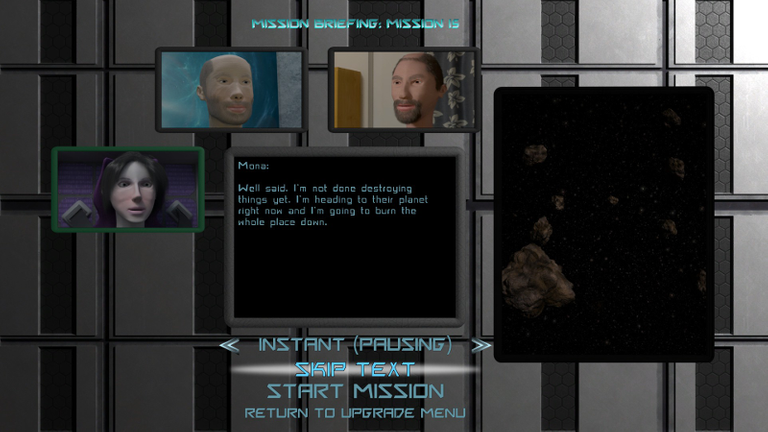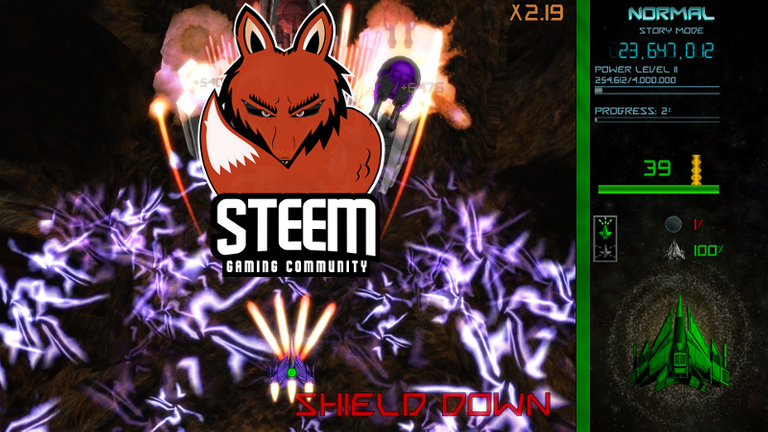Steam's most recent seasonal event--not quite a sale, at least in the sense of deep, store-wide discounts the platform is known for--encouraged users to play games from their libraries that hadn't seen much love. I found that pretty clever and appropriate, given the often-accurate stereotype of Steam players being compulsive collectors of digital media who barely experience a fraction of their accumulated bounties. In my case, one of the neglected titles fetched forth by the Spring Cleaning Event's algorithms was Star Saviors, titled simply Saviors in some places, a $1.99 bargain-shelf title I picked up on a whim who-knows-when.
"Shmups" are a genre I do enjoy, but not deeply enough to be an aficionado on the level of my relationship with Roguelikes or ARPGs. Growing up, I did abrade my thumbs shooting and powering up in Gradius III and Raptor: Call of the Shadows, which these days represent something of a deprecated corner of the genre. The player's heavy-feeling, slowish ships in those games, with their square-inch hitboxes, have largely been superseded by tiny vulnerable motes twitchily navigating hypnotic hazard patterns in the newer subgenre known as "danmaku" or "bullet hell". I have a a bit less familiarity with these, though I did spend a few despondent hours training myself on rRootage while recovering from a breakup in college.
That rambling lead-in is to say: (Star) Saviors incorporates elements of both these ends of the shmup spectrum, in ways I found quite pleasant despite its... rough edges. It would be completely understandable, after all, if you were to try this game and immediately request a refund upon seeing the hideous Potato Head monsters that accompany the game's minuscule and entirely unnecessary "story":

But those things get out of the way quickly if you let them, and indeed there's an Arcade Mode that dispenses with such things from the start. Get past the unpolished aesthetics, and you'll find a solid shmup experience that, while it won't land on any Top Ten lists, will give you well more than your $2 worth. Let me break down a few game elements I found smartly done:

- Your ship has the size, and at least a bit of the mass, of the big-hitboxy shmups of old, but your ship's vulnerable area is clearly distinct from the rest of it. Shoot the core, as they say! Or rather, don't let your core get shot. The hitbox has great contrast against the levels' environments, even when things get frantic.
- Shields and hull. If you take a hit or two, you can recover to full by staying out of harm's way for a few seconds. Get off your rhythm and get repeatedly whalloped, and you'll suffer damage you can't recover until the end of the stage, making the rest of the level more tense. It's not a new concept by any means, but the balance here is nicely struck.
- A progress bar for the level. It incorporates both the simulated distance your ship has to cover and the health bars of any bosses or mid-bosses you'll face during that level, making it a clean visual indicator of how much longer you'll need to hold out until your next breather.
- Your ship has two fire modes: one focusing all weapons forward, and one where your secondary weapon spits sideways. You can use the side-fire mode to protect yourself from lateral threats, or to mop up damaged foes that your front guns didn't quite dispense with on the first pass. Optimizing which mode you use from moment to moment is crucial to high scores and very satisfying to grow proficient with.
- The more consistently you clear the screen, the better your pace of keeping enemy ships exploding at all times, the higher your score multiplier racks up. Again, not mold-breaking or never-before-seen, just smartly included and pleasing in execution.
All told, I didn't hesitate to press the "Recommended" thumbs-up on this one. It's cheap, it's got explosions and deadly geometric blobs, it does what it says on the tin. You could do worse for a couple bucks and as many hours!
